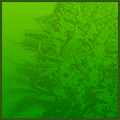|
We Update Daily!
 Custom Search Custom Search
Chris S. Kenoyer. Owner
MMJ Patient, Medical Activist,
Online Patients Advocate,
Online MMJ News Journalist
My Medical Bio
Follow Us Now On Twitter
@MedicalMMJMan
Or Follow Us Now
On Facebook
Email Us Here
olpwebs@yahoo.com
Or Email Us Securely Here
MedicalMMJMan@countermail.com
NEW 100% Encrypted Email Server
OLP’s Free MMJ News EList
Get The Latest In MMJ News
Press Contact Info
Is CBD? A Possible Cure For
Breast Cancer..? And All The Other
Many Forms & Types Of Cancer..?
Learn More About CBD Here
***************************
Advertise Here On OnlinePot
Rates As Low As $50 a Year
24/7 – 365 Days A Year Of Sales!
***********************************
Website Navigational Links
Main Start Page 2
**************************
Latest Marijuana News Reports
*********************************
Parody’s Cartoons US
Government Grown Pot,
Term Papers, School
Reports, & Thesis’s On
Marijuana & Cannabis
*********************************
Amsterdam A to Z
********************************
Canadian Marijuana Websites
*******************************
Church’s & Pot Cannabis
*****************************
Co-Ops, Clinics, Dispensary’s
*****************************
Marijuana Doctors & Clinics
****************************
Pot Cooking Recipes
****************************
Drug Testing A To Z
***************************
Pot Games
****************************
Pot Songs Video’s
****************************
100’s Of Grow Guides
***************************
Hash A- Z
***************************
Cannabis Legal Info, Drug
Lawyers, State, Federal Laws,
State & Supreme Court Rulings
**********************
POW’s Of The MMJ War!
*****************************
Other Marijuana Websites
Reciprocal Link Exchange
****************************
Medical Marijuana Studies,
Research Report’s, Medical
Cannabis Clinic Study’s
****************************
Parody’s & Cartoons
When We All Need A Good Laugh!
****************************
Avoiding Online MOM Scammers
Newly Re-Updated Info!
*****************************
The Politics Of Contraband
Medical Marijuana In The Mail?
******************************
The Hall Of Shame Section
The Online MOM Scammers
*****************************
Online MOM Providers Ads
****************************
Politicians & Voters Rights
****************************
Medical Marijuana, Strains
****************************
The OG Marijuana Strain Guide
****************************
800+ FAQ Growing Questions
****************************
Patients Spiritual Guidance,
Free Online Crisis Help Center
****************************
Online Marijuana Seed Banks
****************************
Maximum Security Section
Just Updated!
*****************************
Traveling Tips, Guides, B & B’s
****************************
Vaporizers A To Z
*****************************
Online Pot Video’s & Movies
**********************************************
Please Visit Both Of Our Sister Websites!
Maine Patients Coalition.org
The Reefer Madness Teaching Museum.org
Listen Right Here Online!
To Original 1930-1950’s
Reefer Madness Propaganda
Radio Shows And Programs
Before TV There Were
"Radio Stars"



*********************************
Legal Disclaimer
Guest Book
Translate Text or Web Page Go To:
Language Tools Google Translations
Article Submissions & News
Reports Are Always Gladly
Accepted Here.

No part of this site maybe used or
reproduced in whole or in part
without the written consent of the
Copyright Owner
www.onlinepot.org
OLP ENTERPRISES L3C
1999-2014 Copyright
© All rights reserved
OnlinePot assumes no legal liability for any products, or information or
news posted, services offered, Or
any contests or give away’s offered.
|
|
2 Marijuana Nutrient And Deficiency Tables & Reports
To use the table just match up the plants symptoms with
those on the table. Nutrients that are shaded Red are the
problem. Find that nutrient in the text below the table for
the remedy.
Return Back To OnlinePot’s Grow Guides
Main Grow Page#1 Or Main Grow Page#2
Nutrient Disorders in Marijuana Plants
Nutrients PH Problems On Marijuana Plants & Spots & Symptoms That Appear
This page is a "Must Bookmark" for any serious medical marijuana cannabis cultivator.
It is a "Goldmine" of Information, & Loaded with photo’s to help you diagnose your plant’s problem.
Diagnosing Marijuana Cannabis Plant Abuse Problems Charts and Photos
There is a second marijuana nutrient report below this one
| SYMPTOMS |
N |
P |
K |
Ca |
S |
Mg |
Fe |
Mn |
B |
Mb |
Zn |
Cu |
Over Fert. |
| Yellow Upper Leaves |
No |
No |
No |
No |
Yes |
No |
Yes |
No |
No |
No |
No |
No |
No |
| Yellow Middle Leaves |
No |
No |
No |
No |
No |
No |
No |
No |
No |
Yes |
No |
No |
No |
| Yellow Lower Leaves |
Yes |
Yes |
Yes |
No |
No |
Yes |
No |
No |
No |
No |
No |
No |
No |
| Red Stems |
Yes |
Yes |
Yes |
No |
No |
Yes |
No |
No |
No |
No |
No |
No |
No |
| Necrosis |
No |
No |
Yes |
No |
No |
Yes |
No |
Yes |
Yes |
No |
No |
Yes |
No |
| Spots |
No |
No |
No |
No |
No |
No |
No |
Yes |
No |
No |
No |
No |
No |
| Growing Shoots Die |
No |
No |
No |
No |
No |
No |
No |
No |
Yes |
No |
No |
No |
No |
| White Leaf Tips |
No |
No |
No |
No |
No |
Yes |
No |
No |
No |
No |
Yes |
No |
No |
| Stunted Growth |
Yes |
Yes |
No |
Yes |
No |
No |
No |
No |
No |
No |
No |
No |
No |
| Deformed New Growth |
No |
Yes |
No |
No |
No |
No |
No |
No |
No |
No |
No |
No |
No |
| Yellow Tips |
No |
No |
No |
No |
No |
No |
No |
No |
No |
No |
No |
No |
Yes |
| Twisted Growth |
No |
No |
No |
No |
No |
No |
No |
No |
Yes |
No |
No |
No |
No |
- NITROGEN (N)
- Pale plants, red stems, smaller growth. Rapid yellowing of lower leaves progressing up the plant. Add any chemical fertilizer containing N. Treated plants recover in about a week.
- PHOSPHORUS (P)
- Slow or stunted growth, red stems. Smaller leaves that are dark green. Lower leaves yellow and die. Add chemical fertilizer containing P. Affected leaves will not show recovery but new growth will apear normal.
- POTASSIUM (K)
- Affected plants are usually tallest and appear to be most vigorous. Necrotic spots form on lower leaves. Red stems. Leaves appear pale or yellow. Add chemical fertilizer containing K.
- CALCIUM (Ca)
- Lack of calcium in the soil results in the soil becoming too acid. This leads to Mg or Fe deficiency or very slow stunted growth. Treat by foliar feeding with one teaspoon of dolomatic lime per quart of water until condition improves.
- SULFER (S)
- Plants suffering from S definciencies exhibit yellowing of new growth. Mix one tablespoon of Epsom salts per gallon of water until condition improves.
- MAGNESIUM (Mg)
- Lower leaves yellow and may even turn white while veins remain dark green. Blades die and curl upward.
- IRON (Fe)
- Leaves on growing shoots turn pale and veins remain dark green. pH imbalances make iron insoluble. Foliar feed with chemical fertilizer containing Fe or rusty water.
- MANGANESE (Mn)
- Necrotic and yellow spots form on top leaves. Mn deficiency occurs when large amounts of Mg are present in the soil. Foliar feed with any chemical fertilizer containing Mn.
- BORON (B)
- Growing shoots turn grey or die. Growing shoots appear burnt. Treat with one teaspoon of Boric acid (sold as eyewash) per gallon of water.
- MOLYBDENUM (MO)
- Yellowing of middle leaves. Foliar feed with chemical fertilizer containing MO.
- ZINC (Zn)
- White areas form at leaf tips and between veins. Occurs in alkaline soils. Zn deficiency can be treated by burying galvanized nails in the soil. Chemical fertilizer containing Zn can also be used.
- OVER FERTILIZATION
- Causes leaf tips to appear yellow or burnt. To correct soil should be flushed with three gallons of water per one gallon of soil.
Nutrient Disorders
Nutrient disorders are caused by too much or too little of one or several nutrients being available. These nutrients are made available between a pH range of 5 and 7 and a total dissolved solids (TDS) range of 800 to 3000 PPM. Maintaining these conditions is the key to proper nutrient uptake.
——————————————————————————–
Nutrients Over twenty elements are needed for a plant to grow. Carbon, hydrogen and oxygen are absorbed from the air and water. The rest of the elements, called mineral nutrients, are dissolved in the nutrient solution. The primary or macro- nutrients (nitrogen (N), phosphorus (P) and potassium (K)) are the elements plants use the most. Calcium (Ca) and magnesium (Mg) are secondary nutrients and used in smaller amounts. Iron (Fe), sulfur (S), manganese (Mn), boron (B), molybdenum (Mo), zinc (Zn) and copper (Cu) are micro-nutrients or trace elements. Trace elements are found in most soils. Rockwool (hydroponic) fertilizers must contain these trace elements, as they do not normally exist in sufficient quantities in rockwool or water. Other elements also play a part in plant growth. Aluminum, chlorine, cobalt, iodine, selenium, silicon, sodium and vanadium are not normally included in nutrient mixes. They are required in very minute amounts that are usually present as impurities in the water supply or mixed along with other nutrients.
*NOTE: The nutrients must be soluble (able to be dissolved in water) and go into solution.
——————————————————————————–
Macro-nutrients Nitrogen (N) is primary to plant growth. Plants convert nitrogen to make proteins essential to new cell growth. Nitrogen is mainly responsible for leaf and stem growth as well as overall size and vigor. Nitrogen moves easily to active young buds, shoots and leaves and slower to older leaves. Deficiency signs show first in older leaves. They turn a pale yellow and may die. New growth becomes weak and spindly. An abundance of nitrogen will cause soft, weak growth and even delay flower and fruit production if it is allowed to accumulate.
——————————————————————————–
Phosphorus (P) is necessary for photosynthesis and works as a catalyst for energy transfer within the plant. Phosphorus helps build strong roots and is vital for flower and seed production. Highest levels of phosphorus are used during germination, seedling growth and flowering. Deficiencies will show in older leaves first. Leaves turn deep green on a uniformly smaller, stunted plant. Leaves show brown or purple spots.
NOTE: Phosphorus flocculates when concentrated and combined with calcium.
——————————————————————————–
Potassium (K) activates the manufacture and movement of sugars and starches, as well as growth by cell division. Potassium increases chlorophyll in foliage and helps regulate stomata openings so plants make better use of light and air. Potassium encourages strong root growth, water uptake and triggers enzymes that fight disease. Potassium is necessary during all stages of growth. It is especially important in the development of fruit. Deficiency signs of potassium are: plants are the tallest and appear healthy. Older leaves mottle and yellow between veins, followed by whole leaves that turn dark yellow and die. Flower and fruit drop are common problems associated with potassium deficiency. Potassium is usually locked out by high salinity.
——————————————————————————–
Secondary Nutrients Magnesium (Mg) is found as a central atom in the chlorophyll molecule and is essential to the absorption of light energy. Magnesium aids in the utilization of nutrients, neutralizes acids and toxic compounds produced by the plant. Deficiency signs of magnesium are: Older leaves yellow from the center outward, while veins remain green on deficient plants. Leaf tips and edges may discolor and curl upward. Growing tips turn lime green if the deficiency progresses to the top of the plant.
——————————————————————————–
Calcium (Ca) is fundamental to cell manufacture and growth. Soil gardeners use dolomite lime, which contains calcium and magnesium, to keep the soil sweet or buffered. Rockwool gardeners use calcium to buffer excess nutrients. Calcium moves slowly within the plant and tends to concentrate in roots and older growth. Consequently young growth shows deficiency signs first. Deficient leaf tips, edges and new growth will turn brown and die back. If too much calcium is applied early in life, it will stunt growth as well. It will also flocculate when a concentrated form is combined with potassium.
——————————————————————————–
Trace Elements Sulphur (S) is a component of plant proteins and plays a role in root growth and chlorophyll supply. Distributed relatively evenly with largest amounts in leaves which affects the flavor and odor in many plants. Sulphur, like calcium, moves little within plant tissue and the first signs of a deficiency are pale young leaves. Growth is slow but leaves tend to get brittle and stay narrower than normal.
——————————————————————————–
Iron (Fe) is a key catalyst in chlorophyll production and is used in photosynthesis. A lack of iron turns leaves pale yellow or white while the veins remain green. Iron is difficult for plants to absorb and moves slowly within the plant. Always use chelated (immediately available to the plant) iron in nutrient mixes.
——————————————————————————–
Manganese (Mg) works with plant enzymes to reduce nitrates before producing proteins. A lack of manganese turns young leaves a mottled yellow or brown.
——————————————————————————–
Zinc (Z) is a catalyst and must be present in minute amounts for plant growth. A lack of zinc results in stunting, yellowing and curling of small leaves. An excess of zinc is uncommon but very toxic and causes wilting or death.
——————————————————————————–
Copper (C) is a catalyst for several enzymes. A shortage of copper makes new growth wilt and
causes irregular growth. Excesses of copper causes sudden death. Copper is also used as a fungicide and wards off insects and diseases because of this property.
——————————————————————————–
Boron (B) is necessary for cells to divide and protein formation. It also plays an active role in
pollination and seed production.
——————————————————————————–
Molybdenum (Mn) helps form proteins and aids the plant’s ability to fix nitrogen from the air. A
deficiency causes leaves to turn pale and fringes to appear scorched. Irregular leaf growth may also result.
——————————————————————————–
These nutrients are mixed together to form a complete plant fertilizer. The mix contains all the
nutrients in the proper ratios to give plants all they need for lush, rapid growth. The fertilizer is
dissolved in water to make a nutrient solution. Water transports these soluble nutrients into contact with the plant roots. In the presence of oxygen and water, the nutrients are absorbed through the root hairs.
——————————————————————————–
The above text is excerpted from George Van Pattens’ excellent book "Gardening: The Rockwool Book".
Key on Nutrient Disorders
To use the Problem-Solver, simply start at #1 below. When you think you’ve found the problem, read the Nutrients section to learn more about it. Diagnose carefully before
making major changes.
1) a) If the problem affects only the bottom or middle of the plant go to #2.
b) If it affects only the top of the plant or the growing tips, skip to #10. If the problem seems to affect the entire plant equally, skip to #6.
2) a) Leaves are a uniform yellow or light green; leaves die & drop; growth is slow. Leaf margins are not curled-up noticeably. >> Nitrogen (N) deficiency.
b) If not, go to #3.
3) a) Margins of the leaves are turned up, and the tips may be twisted. Leaves are yellowing (and may turn brown), but the veins remain somewhat green. >> Magnesium (Mg) deficiency.
b) If not, go to #4.
4) a) Leaves are browning or yellowing. Yellow, brown, or necrotic (dead) patches, especially around the edges of the leaf, which may be curled. Plant may be too tall. >> Potassium (K) deficiency.
b) If not, keep reading…
5) a) Leaves are dark green or red/purple. Stems and petioles may have purple & red on them. Leaves may turn yellow or curl under. Leaf may drop easily. Growth may be slow and
leaves may be small. >> Phosphorous (P) deficiency.
b) If not, go to #6.
6) a) Tips of leaves are yellow, brown, or dead. Plant otherwise looks healthy & green. Stems may be soft >> Over-fertilization (especially N), over-watering, damaged roots, or
insufficient soil aeration (use more sand or perlite. Occasionally due to not enough N, P, or K.
b) If not, go to #7.
7) a) Leaves are curled under like a ram’s horn, and are dark green, gray,
brown, or gold. >> Over-fertilization (too much N).
b) If not, go to #8…
8) a) The plant is wilted, even though the soil is moist. >>Over-fertilization, soggy soil, damaged roots, disease; copper deficiency (very unlikely).
b) If not, go to #9.
9) a) Plants won’t flower, even though they get 12 hours of darkness for over 2 weeks. >> The night period is not completely dark. Too much nitrogen. Too much pruning or cloning.
b) If not, go to #10…
10) a) Leaves are yellow or white, but the veins are mostly green. >> Iron (Fe) deficiency.
b) If not, #11.
11) a) Leaves are light green or yellow beginning at the base, while the leaf
margins remain green. Necrotic spots may be between veins. Leaves are not twisted. >> Manganese (Mn) deficiency.
b) If not, #12.
12) a) Leaves are twisted. Otherwise, pretty much like #11. >> Zinc (Zn)
deficiency.
b) If not, #13.
13) a) Leaves twist, then turn brown or die. >> The lights are too close to the plant. Rarely, a Calcium (Ca) or Boron (B) deficiency.
b) If not… You may just have a weak plant.
Solutions to Nutrient Deficiencies
The Nutrients:
Nitrogen – Plants need lots of N during vegging, but it’s easy to overdo it. Added too much? Flush the soil with plain water. Soluble nitrogen (especially nitrate) is the form that’s the most quickly available to the roots, while insoluble N (like urea) first needs to be broken down by microbes in the soil before the roots can absorb it. Avoid excessive ammonium nitrogen, which can interfere with other nutrients. Too much N delays flowering. Plants should be allowed to become N-deficient late in flowering for best flavor.
Magnesium – Mg-deficiency is pretty common since marijuana uses lots of it and many fertilizers don’t have enough of it. Mg-deficiency is easily fixed with ¼ teaspoon/gallon of Epsom salts (first powdered and dissolved in some hot water) or foliar feed at ½ teaspoon/quart. When mixing up soil, use 2 teaspoon dolomite lime per gallon of soil for Mg. Mg can get locked-up by too much Ca, Cl or ammonium nitrogen. Don’t overdo Mg or you’ll lock up other nutrients.
Potassium – Too much sodium (Na) displaces K, causing a K deficiency. Sources of high salinity are: baking soda (sodium bicarbonate "pH-up"), too much manure, and the use of water-softening filters (which should not be used). If the problem is Na, flush the soil. K can get locked up from too much Ca or ammonium nitrogen, and possibly cold weather.
Phosphorous – Some deficiency during flowering is normal, but too much shouldn’t be tolerated. Red petioles and stems are a normal, genetic characteristic for many varieties, plus it can also be a co-symptom of N, K, and Mg-deficiencies, so red stems are not a foolproof sign of P-deficiency. Too much P can lead to iron deficiency.
Iron – Fe is unavailable to plants when the pH of the water or soil is too high. If deficient, lower the pH to about 6.5 (for rockwool, about 5.7), and check that you’re not adding too much P, which can lock up Fe. Use iron that’s chelated for maximum availability. Read your fertilizer’s ingredients – chelated iron might read something like "iron EDTA". To much Fe without adding enough P can cause a P-deficiency.
Manganese – Mn gets locked out when the pH is too high, and when there’s too much iron. Use
chelated Mn.
Zinc – Also gets locked out due to high pH. Zn, Fe, and Mn deficiencies often occur together, and are usually from a high pH. Don’t overdo the micro-nutrients- lower the pH if that’s the problem so the
nutrients become available. Foliar feed if the plant looks real bad. Use chelated zinc.
Check Your Water – Crusty faucets and shower heads mean your water is
"hard," usually due to too
many minerals. Tap water with a TDS (total dissolved solids) level of more
than around 200ppm (parts
per million) is "hard" and should be looked into, especially if your plants
have a chronic problem. Ask
your water company for an analysis listing, which will usually list the pH,
TDS, and mineral levels (as
well as the pollutants, carcinogens, etc) for the tap water in your area.
This is a common request,
especially in this day and age, so it shouldn’t raise an eyebrow. Regular
water filters will not reduce a
high TDS level, but the costlier reverse-osmosis units, distillers, and
de-ionizers will. A digital TDS
meter (or EC = electrical conductivity meter) is an incredibly useful tool
for monitoring the nutrient
levels of nutrient solution, and will pay for itself before you know it.
They run about $40 and up.
General Feeding Tips – Pot plants are very adaptable, but a general rule of
thumb is to use more
nitrogen & less phosphorous during the vegetative period, and the exact
opposite during the flowering
period. For the veg. period try a N:P:K ratio of about 10:7:8 (which of
course is the same ratio as
20:14:16), and for flowering plants, 4:8:8. Check the pH after adding
nutrients. If you use a reservoir,
keep it circulating and change it every 2 weeks. A general guideline for
TDS levels is as follows:
seedlings = 50-150 ppm; unrooted clones = 100-350 ppm; small plants =
400-800 ppm; large plants =
900-1800 ppm; last week of flowering = taper off to plain water. These
numbers are just a guideline, and
many factors can change the actual level the plants will need. Certain
nutrients are "invisible" to TDS
meters, especially organics, so use TDS level only as an estimate of actual
nutrient levels. When in
doubt about a new fertilizer, follow the fertilizer’s directions for
feeding tomatoes. Grow a few tomato or
radish plants nearby for comparison.
PH – The pH of water after adding any nutrients should be around 5.9-6.5
(in rockwool, 5.5-6.1) .
Generally speaking, the micro-nutrients (Fe, Zn, Mn, Cu) get locked out at
a high pH (alkaline) above
7.0, while the major nutrients (N, P, K, Mg) can be less available in
acidic soil or water (below 5.0). Tap
water is often too alkaline. Soils with lots of peat or other organic
matter in them tend to get too acidic,
which some dolomite lime will help fix. Soil test kits vary in accuracy,
and generally the more you pay
the better the accuracy. For the water, color-based pH test kits from
aquarium stores are inexpensive,
but inaccurate. Invest in a digital pH meter ($40-80), preferably a
waterproof one. You won’t regret it.
Other Things…
Cold – Cold weather (below 50F/10C) can lock up phosphorous. Some
varieties, like equatorial sativas,
don’t take well to cold weather. If you can keep the roots warmer, the
plant will be able to take cooler
temps than it otherwise could.
Heat – If the lights are too close to the plant, the tops may be curled,
dry, and look burnt, mimicking a
nutrient problem. Your hand should not feel hot after a minute when you
hold it at the top of the plants.
Raise the lights and/or aim a fan at the hot zone. Room temps should be
kept under 85F (29C) — or 90F
(33) if you add additional CO2.
Humidity – Thin, shriveled leaves can be from low humidity. 40-80 % is
usually fine.
Mold and fungus – Dark patchy areas on leaves and buds can be mold. Lower
the humidity and
increase the ventilation if mold is a problem. Remove any dead leaves,
wherever they are. Keep your
garden clean.
Insects – White spots on the tops of leaves can mean spider mites
underneath.
Sprays – Foliar sprays can have a "magnifying glass" effect under bright
lights, causing small white,
yellow or burnt spots which can be confused with a nutrient problem. Some
sprays can also cause
chemical reactions.
Insufficient light — tall, stretching plants are usually from using the
wrong kind of light.. Don’t use
regular incandescent bulbs ("grow bulbs") or halogens to grow cannabis.
Invest in fluorescent lighting
(good) or HID lighting (much better) which supply the high-intensity light
that cannabis needs for
good growth and tight buds. Even better, grow in sunlight.
Clones – yellowing leaves on unrooted clones can be from too much light, or
the stem may not be firmly
touching the rooting medium. Turn off any CO2 until they root. Too much
fertilizer can shrivel or wilt
clones – plain tap water is fine.
|



 Button Ads!
Button Ads! 




